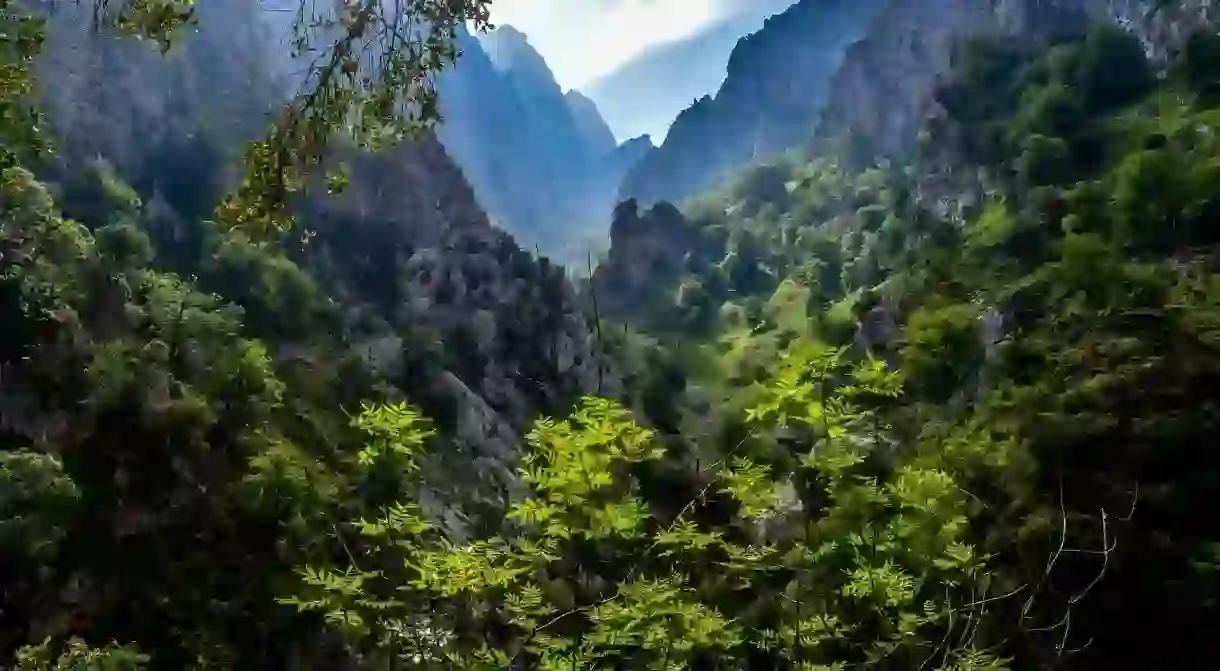The Best Rural Destinations to Visit in Spain

While Spain is famed for its popular holiday resorts and cosmopolitan cities, it is also home to some of Europe’s most beautiful rural areas. Head off the beaten track to explore mountains, coasts and countryside in some of the best rural destinations Spain has to offer.
Catalan Pyrenees

The Aigüestortes i Estany de Sant Maurici National Park is the only one of Spain’s national parks located in the northeastern region of Catalonia and is a dramatic mountainous landscape. It features the soaring peaks of the Pyrenees and around 200 lakes and is a popular area for trekking, especially in summer, when the park’s 10 refuges are open and available for trekkers to sleep in.
Galicia
Galicia breaks all the stereotypes about Spain’s sunny and warm climate. The region, to the far northwest of the country, is known for its rainfall and lush, green, hilly landscapes, as well as for its strong Celtic history and its status as the end point of the Camino de Santiago pilgrimage route. Its countryside and rugged coastline are well worth exploring. The Illas Cíes island chain, off the region’s west coast, is home to some of the region’s most beautiful beaches.
The Basque Country

While Bilbao and San Sebastián are famed for their art and gastronomy, if you leave the Basque Country’s major cities and head into the countryside, you will be rewarded with stunning, green vistas, dramatic valleys and a host of traditional Basque villages that are like nowhere else in Spain. Keep an eye out for baserri – the traditional Basque half-timbered or stone houses that dot the countryside. Another highlight of the region is its rugged coastline, dominated by soaring cliffs, beaches and charming villages.
Formentera

The least-known of Spain’s Balearic Islands (that also include Ibiza, Mallorca and Menorca), Formentera is 19 kilometres (12 miles) long and located six kilometres (four miles) off the south coast of Ibiza. The island is known for its beautiful white beaches (one was recently named one of the best in Europe) and for being a famous hippy hangout: Joni Mitchell wrote her 1971 album Blue while staying on the island.
Tabernas Desert

The Tabernas Desert, one of Europe’s only deserts, is a vast, sandy landscape punctuated by sandstone hills located in the province of Almería, southeast Spain. The vast area is a nature reserve and has been used as the location for hundreds of films and television shows, most notably the Spaghetti Westerns of the 1960s and 70s. Sergio Leone shot his Three Dollars trilogy, starring Clint Eastwood, in Tabernas.
Pueblos blancos of Andalusia
Andalusia’s ‘white towns’ are a number of villages of whitewashed houses mainly set within the Sierra de Grazalema National Park, in the northern part of the province of Cádiz, southern Spain. The towns, which include Grazalema, Zahara de la Sierra and Benaocaz, are a popular tourist draw, and the surrounding mountains are great for hiking, climbing and horse riding. The area has been a biosphere reserve since 1977 and is home to a great number of vultures. Many of the villages date back to Moorish times, when the area was known as Al-Andalus.
Bardenas Reales

The otherworldly landscape of barren badlands, rocks and hills of the Bardenas Reales National Park in Navarra was formed over thousands of years of erosion of clay, chalk and sandstone soils and today is a Unesco Biosphere Reserve. The erosion has resulted in unusual formations, giving the area a lunar look that has made it a go-to filming location. The area can be explored on horseback for the ultimate immersive experience.
Lanzarote vineyards

For anyone looking for an alternative wine holiday, the Canary Island of Lanzarote could be right up your street. The island is home to what must be some of the world’s most unusual vineyards, set as they are in the black volcanic soil, buried in holes and surrounded by protective rocks to keep them safe from Lanzarote’s driving winds. The main wine-making region is called La Geria, a protected zone where the majority of vineyards make and bottle their own wines.
Picos de Europa

This mountain range, whose name means ‘the peaks of Europe’, covers the regions of Asturias, Cantabria and Castile and León and is populated by jutting peaks that are ideal for hikers and rock climbers. It is said they get their name from the fact that the mountains were the first bit of Europe that sailors arriving from America set eyes on. The mountains are rich in flora and fauna and are home to a small population of Cantabrian brown bears, as well as wolves, eagles and vultures.
Sierra Nevada
Home to Europe’s most southerly ski resort, the Sierra Nevada in the province of Granada, Andalusia, is home to the highest point in mainland Spain, Mulhacén, which rises to 3,478 metres (11,411 feet). Because of its altitude, it is known for its long ski season; late in the season you can ski by morning and be on the beach by the afternoon.
Las Médulas

This stunning and devastated landscape near the town of Ponferrada, northwest Spain, is what was left of the largest and most important gold mine in the entire Roman Empire. A Unesco World Heritage Site, the area is made up of jutting burnt orange peaks formed by the Roman method of hydraulic mining that used water to break up the rock. Today, traces of Roman engineering can still be spotted throughout the area. The best views can be had from the Mirador de Orellán.
Choose the best, forget the rest: why not visit Europe’s official best beach?













